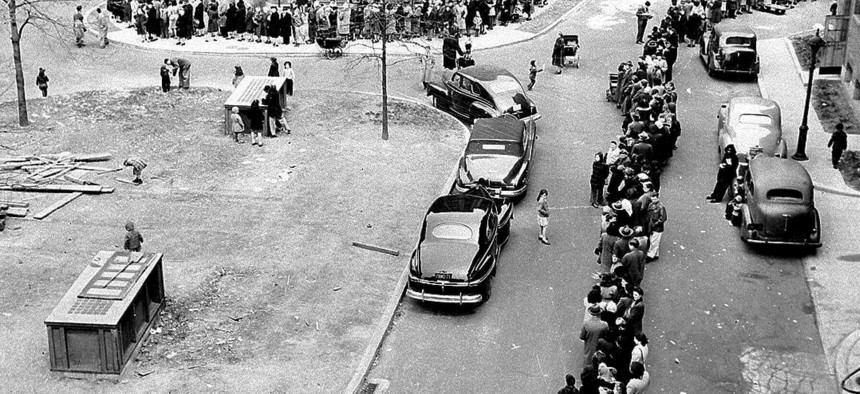Like most of the country, New York has been slow to get COVID-19 vaccines out to residents. But past immunization efforts in New York haven’t been nearly as slow. New York City health officials in 1947 managed to distribute smallpox vaccines to a whopping 5 million residents in just two weeks. Meanwhile, the city has only used up 25% of the COVID-19 vaccine doses it has received since mid-December, giving just about 110,000 people their first dose.
So why is it that local efforts to provide vaccines now – when the presence of a more transmissible variant of the new coronavirus has made it even more time-sensitive – are falling short of a campaign from 74 years ago? A strong reliance on public health systems and effective communication with the public are two factors that made the 1947 campaign work, and their absence may also inhibit New York’s efforts today.
Smallpox began to make a resurgence in New York City in March 1947, when a man who had traveled from Mexico became sick and died from the disease. By early April, Israel Weinstein, the city health commissioner at the time, began to urge New Yorkers who hadn’t been vaccinated as children to get vaccinated. Vaccines were distributed for free at the Health Department’s clinics and city hospitals – which were open to the public day and night, seven day a week – as well as at police precincts, schools and offices. Distribution was bolstered by volunteers from the American Red Cross and other groups. Via radio stations, newspapers and posters, Weinstein encouraged New Yorkers to get vaccinated quickly with the message: “Be Sure, Be Safe, Get Vaccinated.”
The public heeded his warning. “He did not want to make it compulsory, or forceful in any way,” said Judith Leavitt, a historian at the University of Wisconsin. “He just wanted to say it's available and it's advised.”
More than 600,000 people had gotten the vaccine within the first week, according to the city’s estimates, in a city of 7.8 million at the time. By April 16, there was in fact a vaccine shortage that was quickly relieved with the arrival of 1 million doses. New Yorkers waited in lines throughout the night, and even in the rain, in the hopes of getting vaccinated. In total, 6.35 million people were vaccinated over one month.
New York’s comparative slowness today may be partly due to public health departments’ diminished role in vaccine distribution, said Pascal James Imperato, a former New York City health commissioner. “What we have now in New York state is a vaccination program that is primarily under the administration of hospital systems. Hospital systems take care of sick people. Public health departments investigate, prevent and control epidemics. And I think therein lies a major problem in New York state right now.”
Gov. Andrew Cuomo has largely delegated the vaccine distribution to individual hospital systems in 10 regional hubs across the state. County leaders have criticized the approach, emphasizing their pre-existing mass vaccination plans and requesting greater control over the process to speed up distribution.
“Relying on hospital systems uniquely as the people who are leading the effort is not wise, because hospitals have never been involved, except as collaborators with health departments, in administering vaccines,” Imperato said. The 1947 campaign, in comparison, was managed almost entirely by the city Health Department, in collaboration with the private sector and other entities.
New York is beginning to expand more of its distribution in response to criticism of the slow rollout. While COVID-19 vaccinations have dropped significantly on weekends and holidays, New York City Mayor Bill de Blasio pledged to move toward a 24/7 approach to providing doses to the public. More inoculation sites are popping up across the city, which will be open from 8 a.m. to 7 p.m. Tuesday through Saturday this week.
Where health officials in 1947 were at an advantage was that the post-World War II period meant many residents had trust in the government, Leavitt said. That makes it all the more important to emphasize strong communication with the public and transparency about the vaccine, which has been complicated by the mixed messages across local, state and federal governments. “If you want a good campaign, you have to have people informed and you have to get their trust. And you get their trust by keeping them informed with facts, with regular updates, with information that they need. We're not getting that now.”
NEXT STORY: New York’s vaccine count is only getting started


